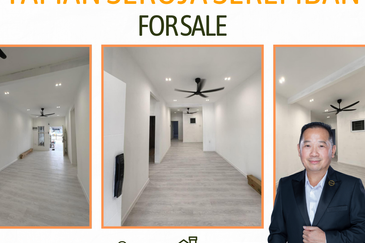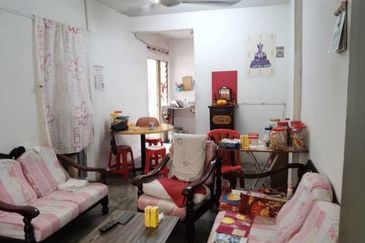
HONG KONG (July 10): China may not seem like a very good example of a sustainable built environment but it has certainly achieved a lot in a very short time.
At the recently concluded World Sustainable Built Environment Conference 2017 in Hong Kong held from June 5 to 7, several green building experts who took part in a roundtable entitled “Emerging Perspectives for Transforming the Built Environment” stressed on the importance for each stakeholder including the government and the consumers to play their roles in the push towards a sustainable built environment.
In emphasising the role of the government, China was cited as an example of how its government took the lead in the country’s green agenda.
The government, the private sector and end-users are the three key parties in the transformation of a city into a greener one, said World Green Building Council chairperson Tai Lee Siang during the roundtable.
“We need to get the people to understand the need, the industry to provide the leadership and the government as an engine to push this [green built environment] forward. All these three parties have to come together for us to have a chance of seeing the green building concept succeed,” he noted.
Tai pointed out that more often than not, while the government and private sector have accepted the concept and importance of moving towards green building, the end-users are still very passive about it.
“One of the World Green Building Council’s goals is to build only net zero buildings, or buildings with zero net-energy consumption, by 2050. I believe the supply side already understands why and how to do it. Now, we need to convince the demand [end-user] side,” he said.
To do that, one of Tai‘s suggestion was to promote the concept of green building in the way that a lay person would understand.

“We have related this [green building] to the lay person. There are two key words: money and health. If you talk about these two to the lay person, everyone will understand that building green has everything to do with them. We should tell them that having sustainable buildings can save money and improve their health as well,” he elaborated.
Besides the demand and supply side, he added that the government also plays a crucial role in the creation of sustainable built environments.
China’s move
Tai pointed out that China is a very good example in the development of green buildings. The China government, he said, has been giving endless support in the promotion of green buildings over the past 10 to 15 years.
Meanwhile, another speaker at the roundtable, China Green Building Council chairman Wang Youwei also attributed the significant achievement of China in the development of green buildings to the support of the government.
Citing the recent Shanghai green office report, Wang said the energy consumption per capita in Shanghai’s green office buildings has decreased significantly over the past three years.
In 2013, the average energy consumption per capita of Shanghai’s green office buildings stood at 92kWh. However, in 2014, the figure has decreased to 86kWh and in 2015, it has reduced further to 68kWh.
“The study on the average energy consumption per capita in Shanghai’s green office buildings has proven that the impact of green buildings is significant. The result also encourages the government to continue taking the lead in developing green buildings to improve the quality of life in China,” Wang noted.
Use big data to effect change
Other panellists at the roundtable were international architecture and interior design firm Ronald Lu and Partners’ vice chairman Bryant Lu and professor of Architecture and Building Systems ETH Zurich Arno Schlueter.
Lu said governments should aim to create demand by implementing relevant regulations and incentives.
“There are some 88% non- green-certified buildings worldwide although we have spent the past 15 to 20 years pushing the concept. Many developers and end-users think green buildings have nothing to do with them and therefore are not necessary,” said Lu.

Lu, however, believes that green building will gain higher acceptance worldwide in the future with the growth in technology and capacity as well as open source/knowledge sharing platforms.
“We can get the green building miracle to happen if we relate it to the end-users and create the urgency to adapt to this change, just like the adoption of smartphones 10 years ago,” he shared.
“We have the technology to create smarter buildings now. We also have the capacity to rebuild or enhance our current buildings or even cities. And we have enough data collected from the past 15 to 20 years to convince the end-users why we need to change.”
Schlueter concurred. “We have more data now and we should relate them to the end-users, to convince them that change is not just an industry matter but theirs as well,” Schlueter said.
Lu recalled a case in Singapore where a developer managed to convince a property owner to redevelop a car park space into an automated car park so that more than half of the land can be released to build something that brings more value.
“When the end-users see the potential value that can be unlocked from the redevelopment, they will be more willing to adapt to the change,” Lu said.
The roundtable session was chaired by Karlsruhe Institute of Technology’s Sustainable Management of Housing and Real Estate head of chair Thomas Lutzkendorf.
Held at the Hong Kong Convention and Exhibition Centre, the conference organised by the Hong Kong Green Building Council and Construction Industry Council was themed “Transforming Our Built Environment through Innovation and Integration: Putting Ideas into Action”.
The three-day event brought together 1,800 green building advocates, policymakers, academics and industry practitioners from over 55 countries. TheEdgeProperty.com was one of the international media invited to the event.
This story first appeared in TheEdgeProperty.com pullout on July 7, 2017. Download TheEdgeProperty.com pullout here for free.

























